This morning, Diane went for a walk in Speyer while I braved the vinegar tasting at Doktorenhof. They dressed us as authentic vinegar-producing monks before leading us through a tour of the cellar and the tasting.
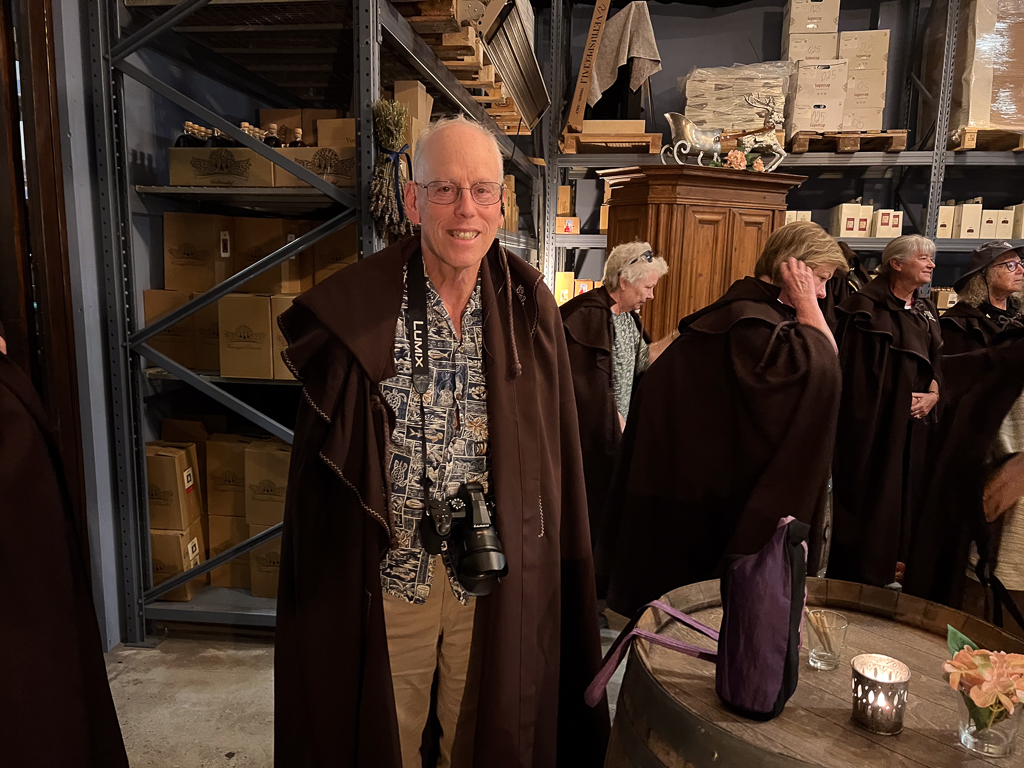
Doktorenhof takes local grapes and turns them into wine (which takes a year or so), then adds mother of vinegar and lets it work for a couple of years (or longer) to create their basic vinegar. They also add various fruits, spices, herbs, and other ingredients to make their digestive and aperitif vinegars.
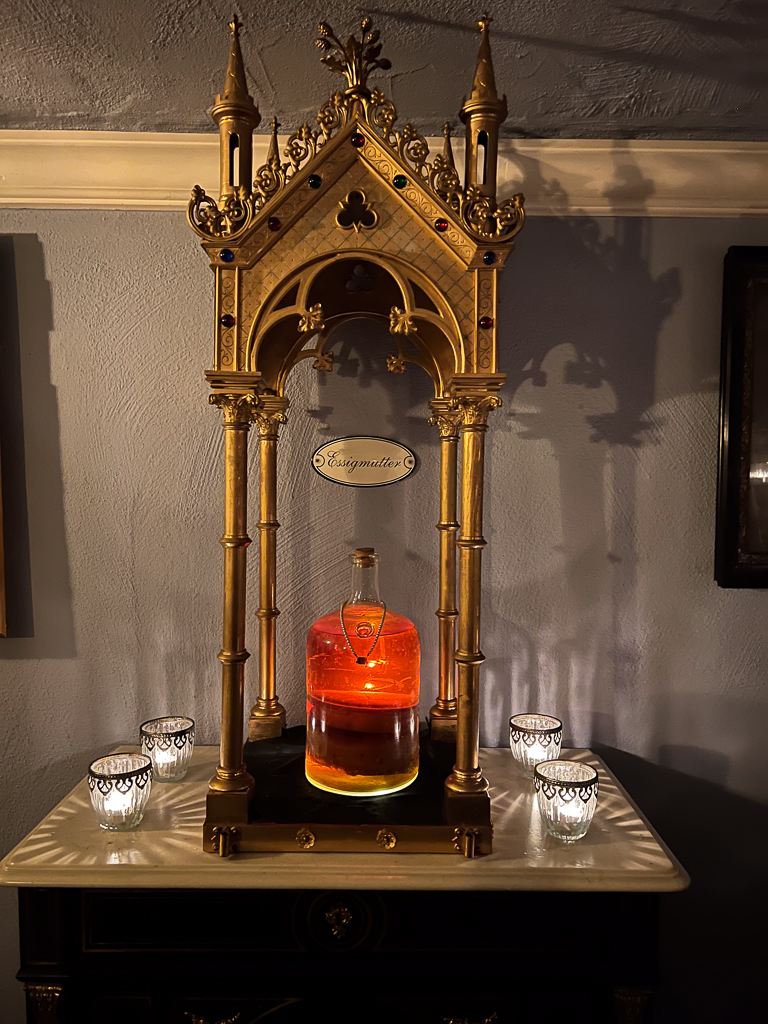
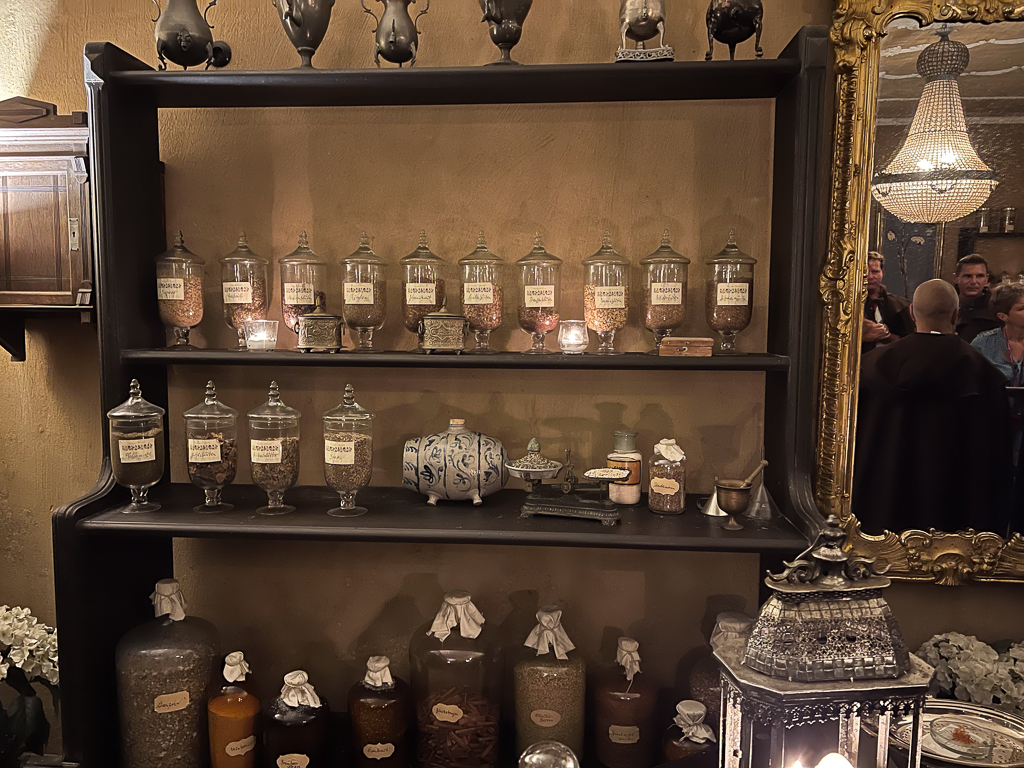
Our costumes were modeled after those that doctors had used during the plague years to keep themselves relatively safe; they soaked the clothing with vinegar and wore masks.
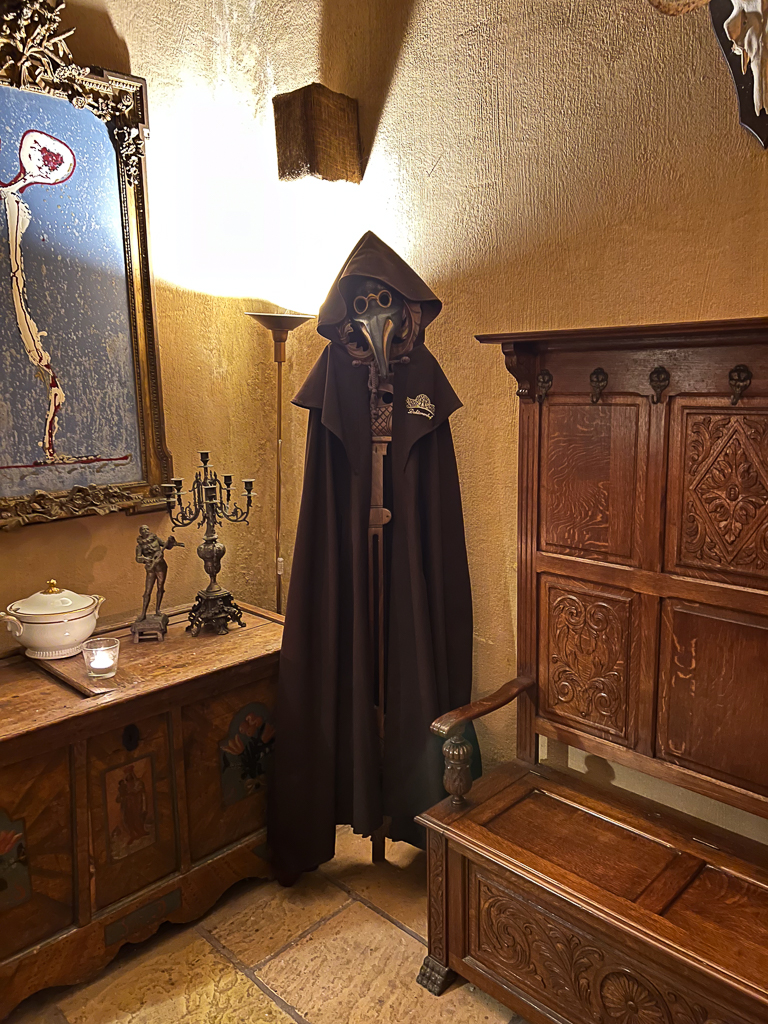
They offered five vinegars for tasting; their owner has special glasses created to help your mouth properly engage with the vinegar. My favorite was the fig vinegar, but they were all enjoyable – something I never expected to say about vinegar!
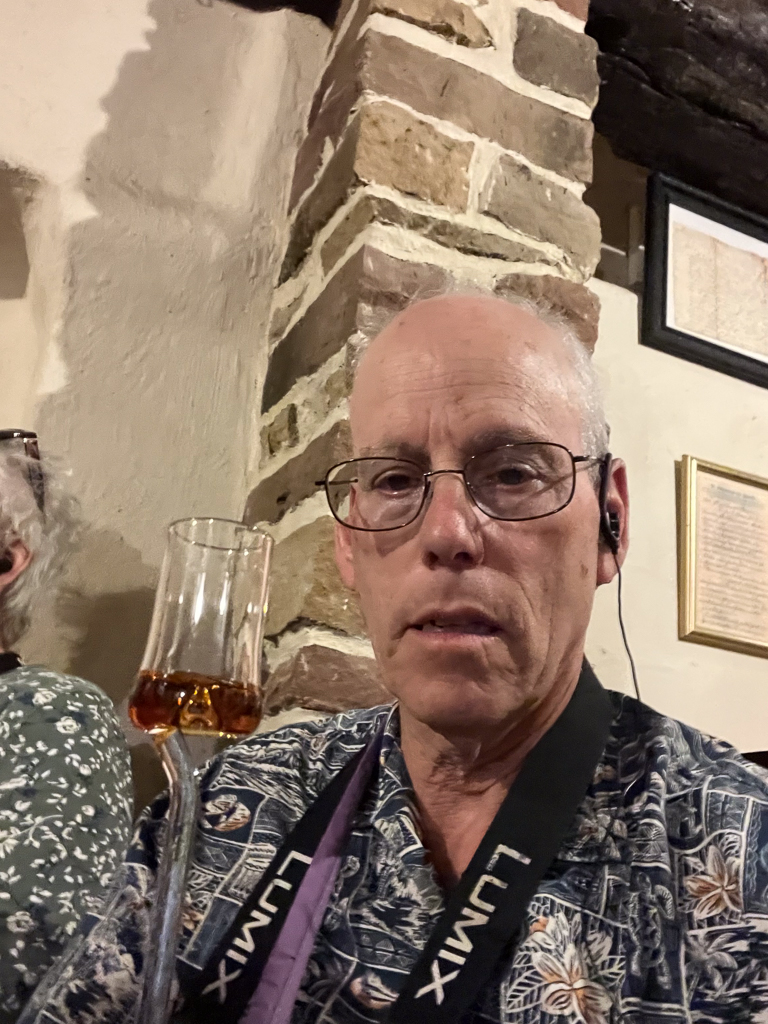
This afternoon, Diane and I (and a bus full of new friends) explored Romantic Heidelberg. The castle looms over the city.
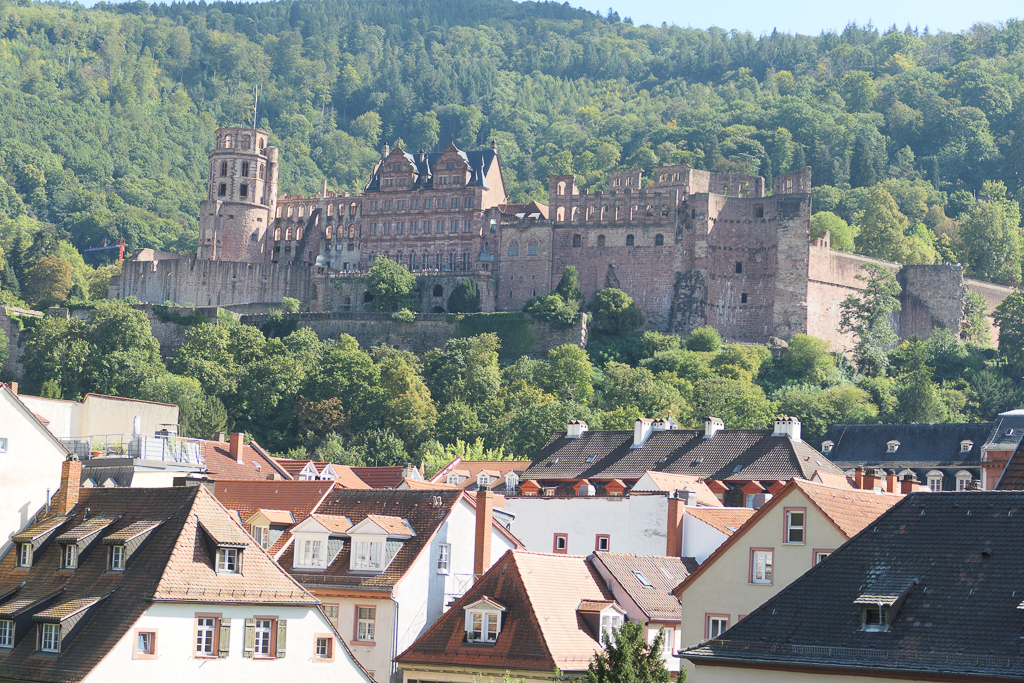
Heidelberg was not bombed during WWII; apparently the general in charge of picking targets had read Mark Twain’s “The Awful German Language” and it moved him to spare the city (also, he thought it would be a good place for a US base after the war). Our guide, Max, told us the story while we were walking on the Old Bridge.
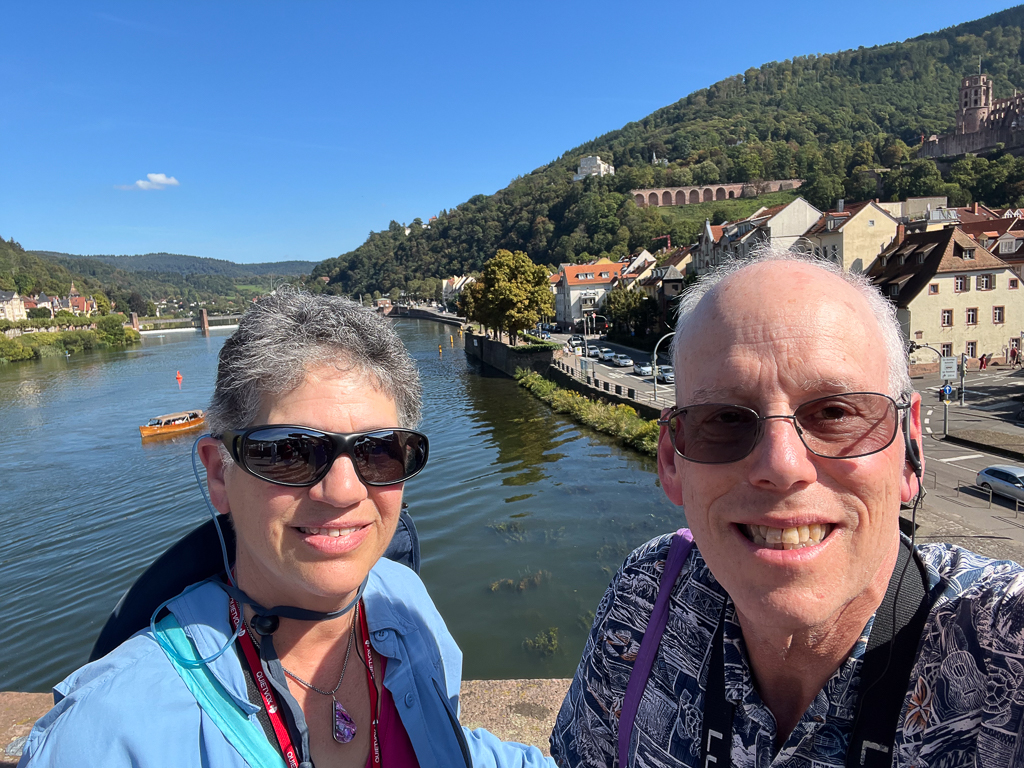
Our tour of Heidelberg included some treats – we started with an interesting lime and ginger liquor, followed by a Turkish pastry and a plum crumb cake. Somehow, I only got a photo of the liquor.
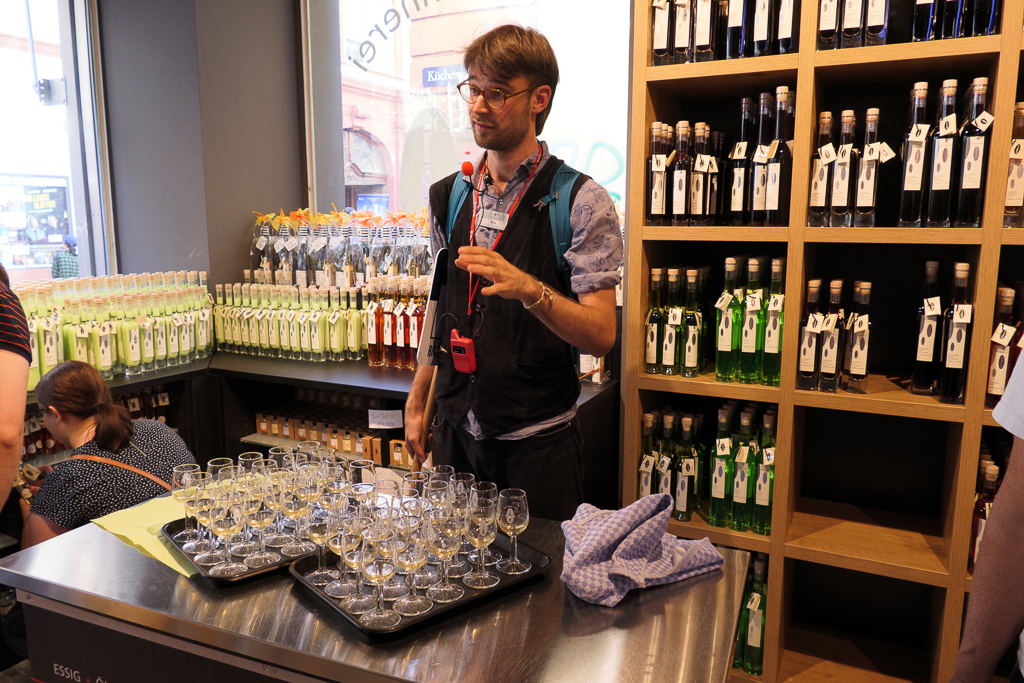
There was a demonstration in support of Iranian Women’s Rights weaving its way through the main shopping street while we were getting our treats; it had a significant police escort (which was the only way it could get through the crowds).
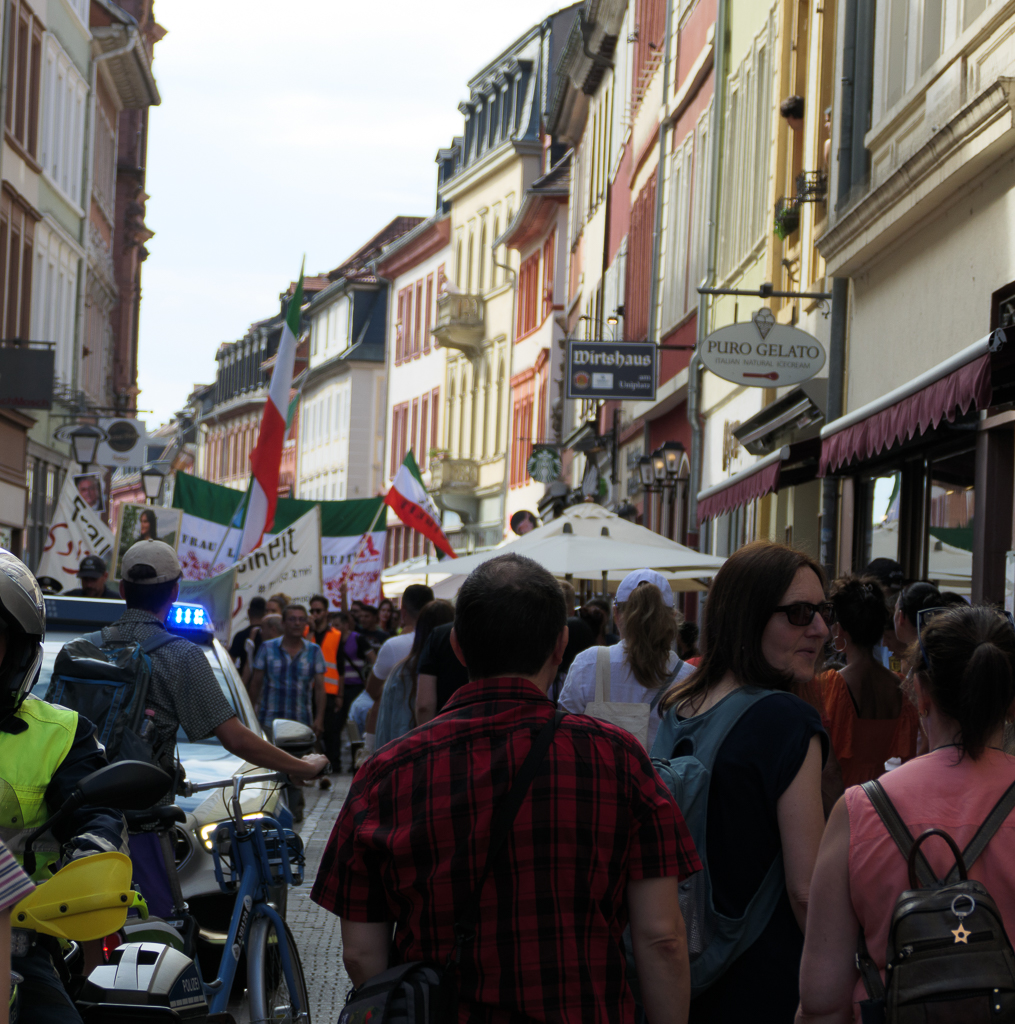
After our treats, we took the funicular up to the Castle. Parts of it were built by Prince-Elector Friedrich V and Elizabeth Stuart, the daughter of King James I, after they married; that section includes the most famous balcony in Germany, used for televised productions of Romeo and Juliet.
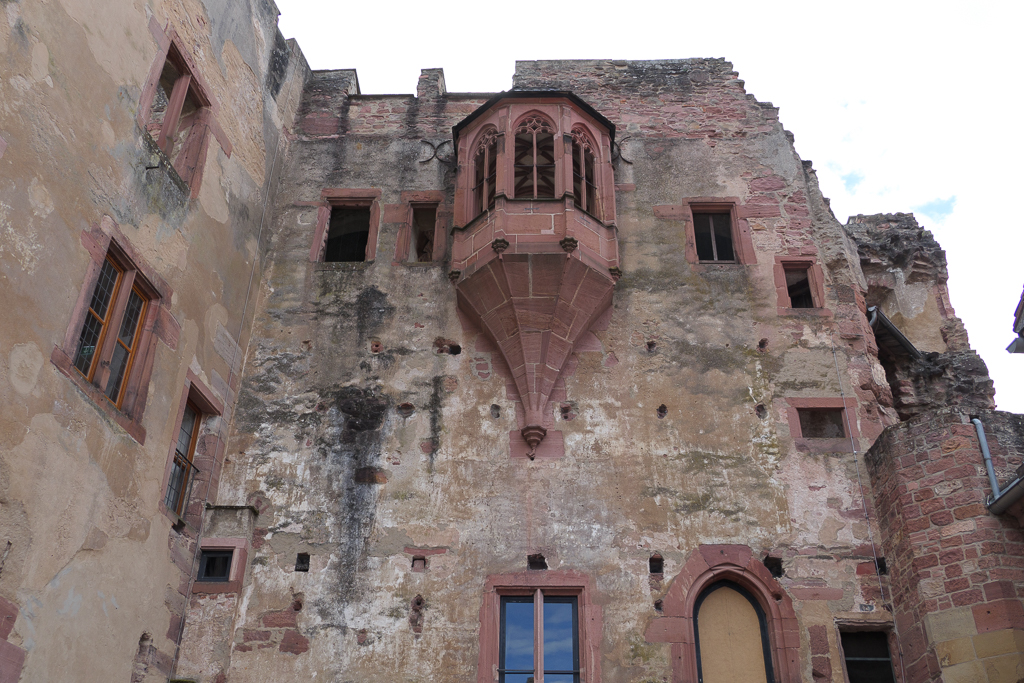
The castle had originally been built in the 13th Century; Louis XIV tried to destroy it in 1693, but the walls were so thick that parts of it survived.
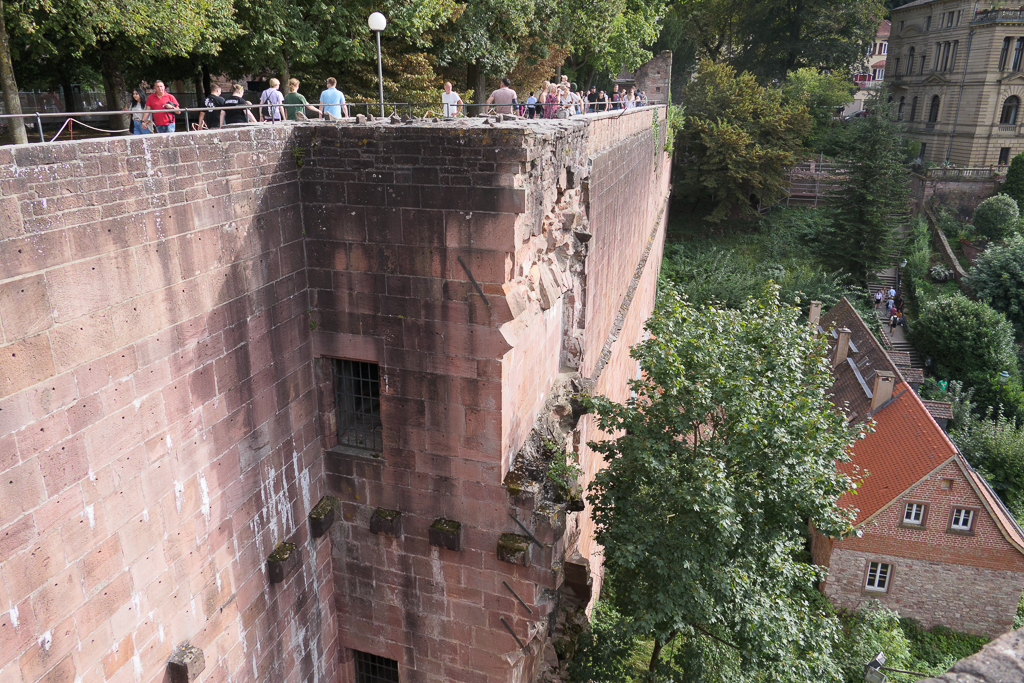
There was an ammo tower in the castle, with all of their gunpowder stored in it. It might not have been the best idea, because it blew up!
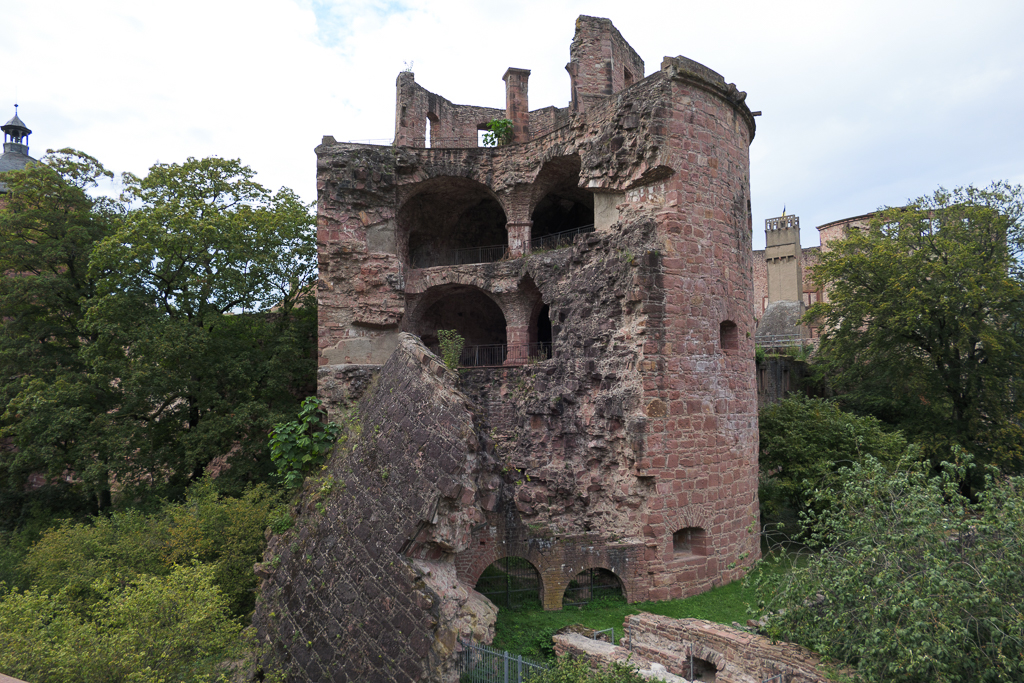
I would be derelict if I didn’t mention that the Castle includes the biggest wine barrel in the world, holding 219,000 liters. These days, it holds 219,000 liters of air. Oh, well….
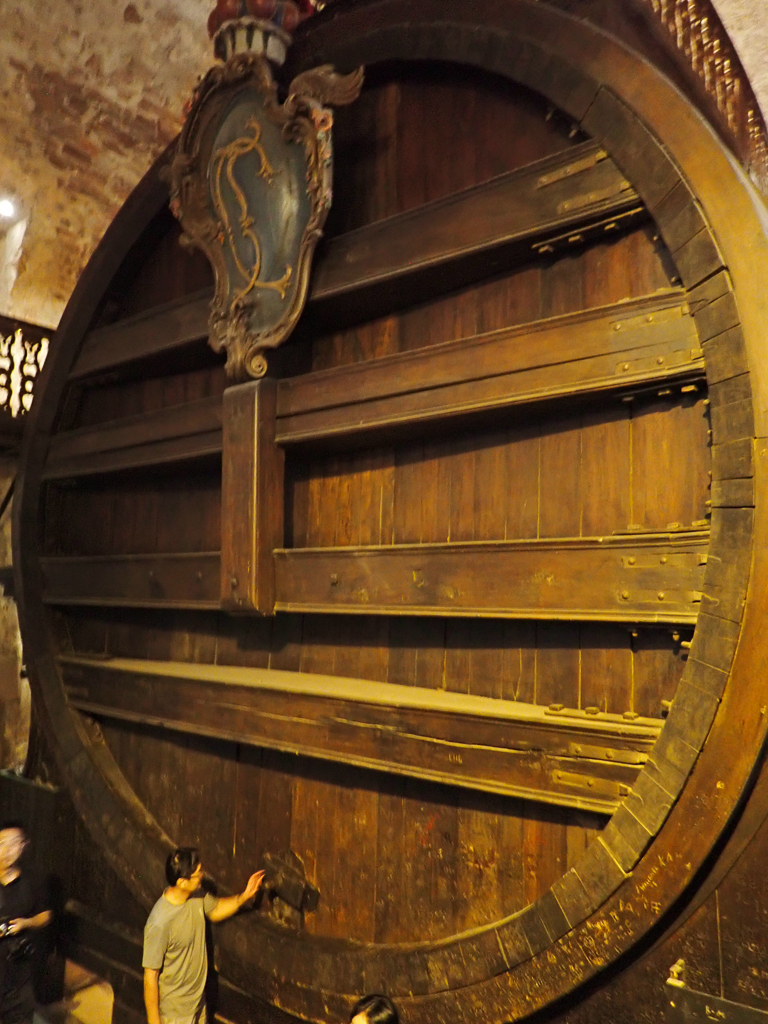 (Photo by Diane Goldman)
(Photo by Diane Goldman)